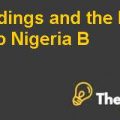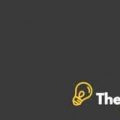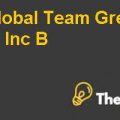
WORKING CAPITAL ASSIGNMENT Case Solution
Effects of Restrictive Working Capital Policy
There are different types of working capital policies including the moderate, relaxed and restricted working capital policy. Under the restrictive working capital policy, the estimation of the current assets of the company in order to achieve the desired target revenue for the company is done aggressively. This means that this estimation is done without considering any sort of provisions and contingencies for unforeseen events which might impact upon the estimation of the current assets.
Once these policies have been decided, then they are implemented forcefully without considering any tolerances for specific deviations. The advantages as well as the negative effects of an aggressive or a restrictive working capital policy are quite severe. First of all, if we talk about the advantages of this policy, then the adoption of this policy results in lower level of the working capital due to lower level of the current assets. This produces higher profits for the company because the interest cost is saved by the company and as a result the company achieves a higher return on investment (Valipour, Moradi and Dehghanfarsi 2006).
However, there are severe negative effects of a restrictive working capital policy. For example, the profitability of the company is increased significantly in the short term but the risk of bankruptcy and default increases for the company over the long term. Another example of this could be that if there is an emergency and an instant payment on the bonds needs to be made, then the company would be simply unable to pay that. Lost sales and shortage of inventories might also occur as a result of tight inventories which would be held by the company under this policy (Valipour, Moradi andDehghanfarsi 2006)...
Bond investors might not be willing to invest in the bonds of the company and they might also force the company to increase the corporate bond interest rates due to higher bankruptcy risk. Lastly, as stated previously, a restrictive working capital policy would result in the rapid increase of the return on assets if measured by, for example, gross income/working capital requirement. However, this might simply be an increase in the percentages of the indicators but the absolute gross income of the company might actually fall...
Effect of Firm Size and Market Structure on Working Capital Asset Decisions
First of all, if we talk about the impact of the firm size on the working capital asset decisions then, the theoretical basis for the firm size argues that firm size is more related to profitability. There is a positive relationship between the firm size and the profitability of the company. Other researches also show that there is a negative relationship between the size of the firm and the cash conversion cycle.Most of the large companies have higher bargaining power with the supplier and the reason for this is that large companies can easily negotiate with the suppliers to pay them in the long term (Ammar 2003).
On the other hand, those companies whose size is smaller as measured by the logarithm of the sales tend to have larger cash conversion cycles. Therefore, the company’s size tends to affect the working capital asset decisions of the managers of the company. When the size of the company is large, then it tends to go for a restrictive working capital policy, however if the size of the company is small then it would go for a moderate or relaxed working capital policy (Lee 2009). ....................
This is just a sample partial case solution. Please place the order on the website to order your own originally done case solution.










